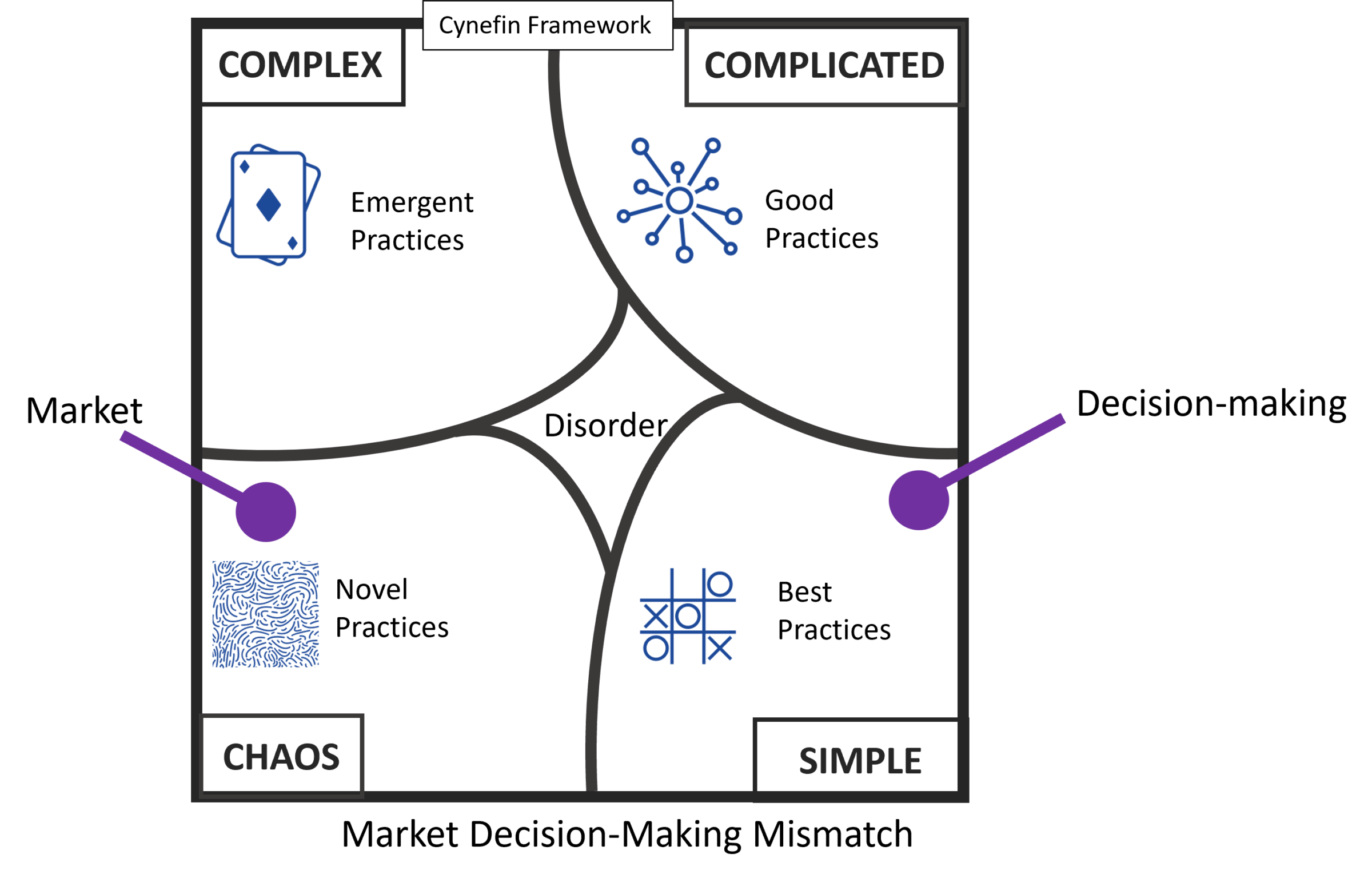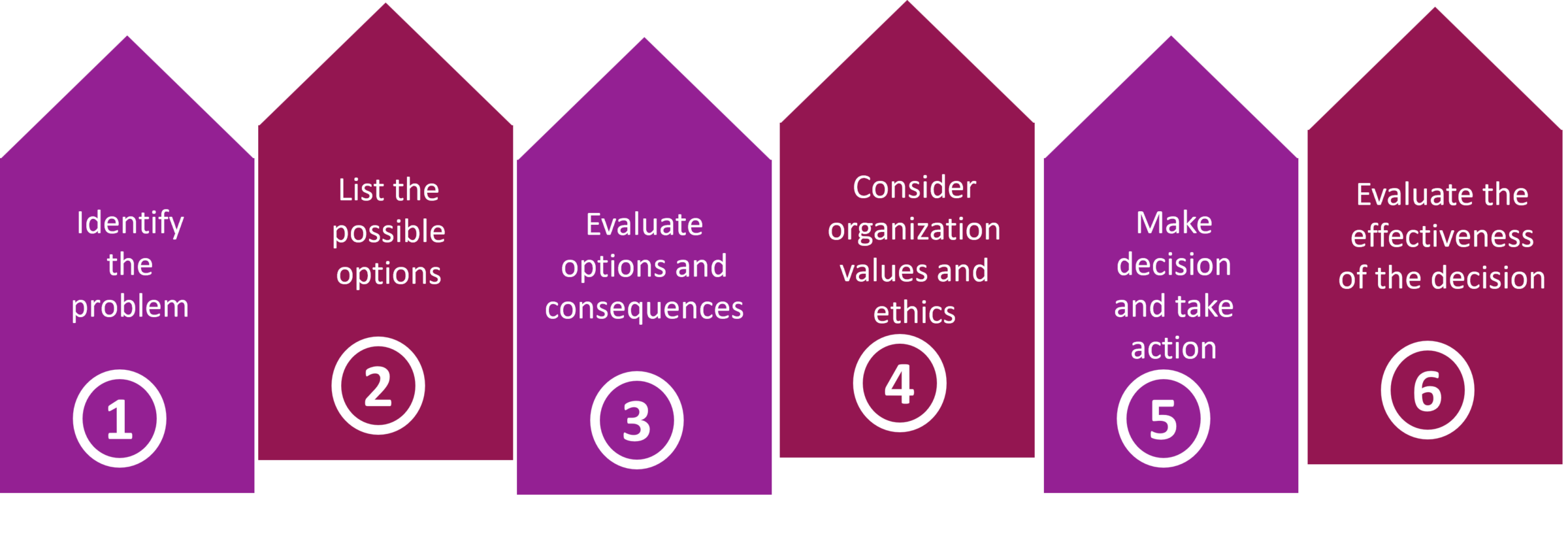Decision-making is becoming more critical than ever. Organizational performance depends heavily on the timing and quality of decisions. We live in a time when everything is questioned — products, ideas, images, old information, prejudices, even people. This makes decision-making harder. To make easier and faster decisions with fewer resources, leaders need the support of decision-makingtechnology. Collective decision-making supported by artificial intelligence (AI) is the key to boosting performance.
Decisions in an Unpredictable Market
Market and customer behavior is highly complex and unpredictable. Organizations must thrive within this uncertainty to perform well, and new business initiatives in this climate require decisions with immediate results.

However, most organizations continue to overly simplify market and customer behavior. As a result, they often make poor decisions. For example, we assume that if we offer a discount, customers will buy more. This maybe true, or we may have made a faulty decision. Frontline employees often know the real cause of a customer choice and what is actually needed. Unfortunately, they are not typically part of the decision process. That’s where AI comes in. AI enhances an organization’s decision-making capabilities so it can perform optimally, despite unpredictable market and customer behavior.
The Decision-Making Process
So what goes into making a decision? Decision-making usually involves selecting the option most likely to contribute to organizational objectives. To do this, we think through the problem, consider available options, and compare the pros and cons. This requires some level of cognitive effort, in other words, thinking! Taking the time to make a decision, take action, and evaluate the decision’s effectiveness ensures that decision quality improves.

In practice, this decision-making process is usually not very effective. Common reasons for this include:
- Symptoms being treated as problems, or problems not being correctly understood,
- Personal preferences that do not contribute to organizational objectives,
- Slow decision-making due to fear of failure,
- Lack of evaluation and learning.
These are all contributing factors, but what is the underlying cause of this poor decision-making? Pressure.
Leadership Under Pressure
Under optimal circumstances, only a limited number of choices must be made. A leader has enough time to consider the situation, analyze the options, and make a decision.

In reality, the number and urgency of decisions are increasing in today’s constantly changing organizations and markets. Leader workload is also expanding. When the pressure grows too high, human error is more likely to occur. This type of pressure has been extensively investigated in the aviation industry. During a flight, a pilot has to deal with multiple tasks and demands. As these demands increase, the pilot’s capabilities decrease. The chance of mistakes increases if many things happen at the same time, so interpersonal communication, leadership and decision making are critical.

Leadership teams in organizations are not that different from cockpit crews. If there is too much work pressure, leadership will be overloaded, and the chance of making bad decisions will increase. This is especially true when the organization is in the process of transformation while conducting business-as-usual.
Human & Artificial Intelligence in Decision-Making
Our ultimate goal is to improve decision-making by enhancing situational awareness, self-awareness, leadership, assertiveness, flexibility, adaptability, event and mission analysis, and communication. Both human and artificial intelligence play important roles. An organization’s leaders should foster a culture where leadership may be respectfully questioned. This initiative comes from humans, not AI. It acknowledges that the first sign of an error is often a discrepancy between what is happening and what should be happening. This is a delicate subject for many organizations, especially ones with traditional hierarchies. Leaders must therefore be taught appropriate communication techniques so they can understand that questioning authority does not have to be threatening. Subordinates can also learn the correct way to question decisions. AI increases the leadership’s decision-making capabilities. Its contributions are invaluable in preventing errors, especially considering leaders’ heavy workloads.

AI supports decision-making by:
- Analyzing the situation based on data, trends,historical information, and information from outsidethe organization.
- Giving leaders insights and options.
- Providing fact-based information.
- Looking at the big picture instead of local optimization.
AI is already used in many industries. For example, in the financial industry, it’s becoming very common to support primary decision processes with machine learning or rules-based AI.
Although technologies like AI may have gradual, long-term effects that we do not yet understand, their potential benefits make it wise to investigate what is possible.
Bootstrap Decision-Making with Leadership
Teams & AI
Decisions made by a team are more accurate than individual decisions. When a team decision is combined with AI, the organization will be ready for the future. As with all things, start small and use the capabilities already available in the organization. Consider thesefactors that fuel wise decisions:
Fact-based
Gather information from multiple layers and different types of people in the organization. Some leaders tend to only consult with their peers and by doing so miss out on important in formation. Rely on facts instead of opinions.
Culture
Foster a culture where leadership may be respectfully questioned. Leaders should be trained to be open-minded.
AI
Investigate how AI can support you in your decision-making.
Evaluate.
The majority of all decisions leaders make are never evaluated. What was the effect of the decision? How has the organization benefited from it? Agile processes can help support this evaluation.







